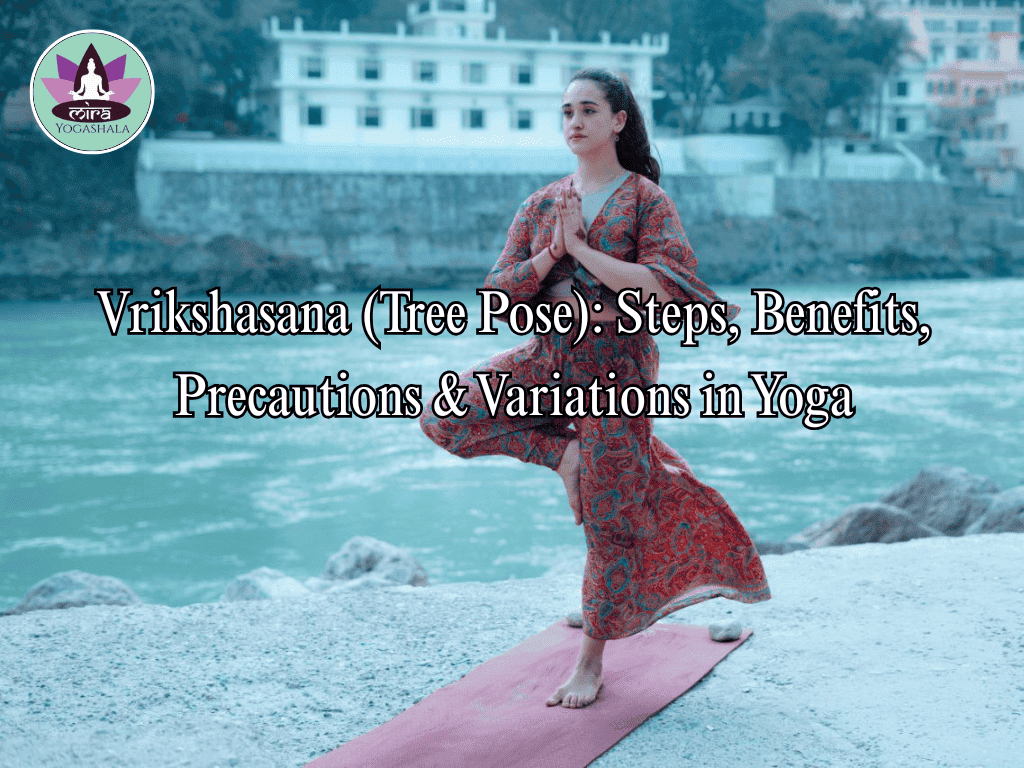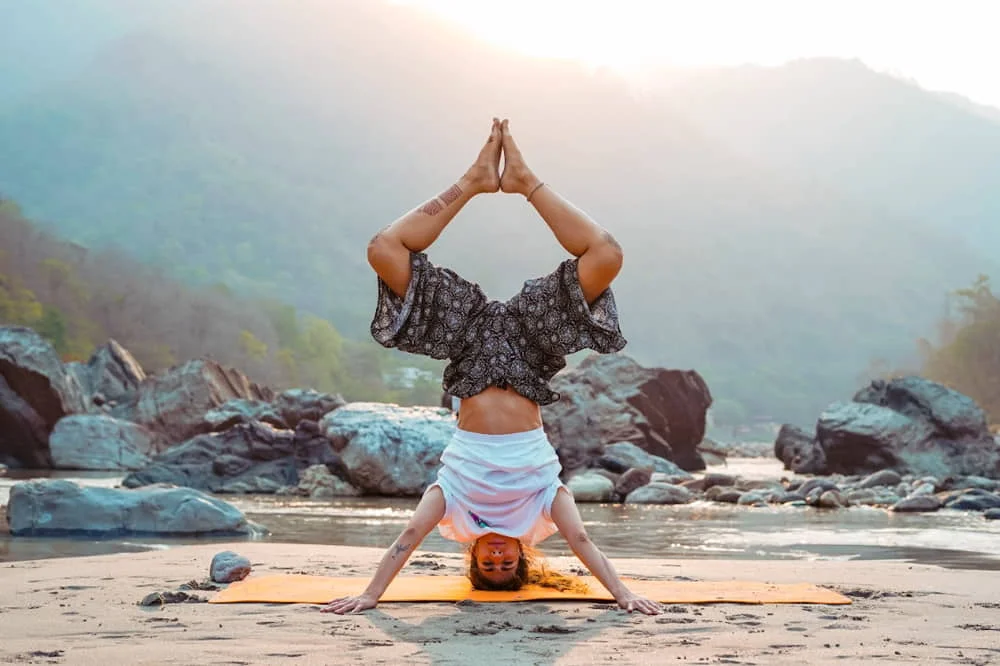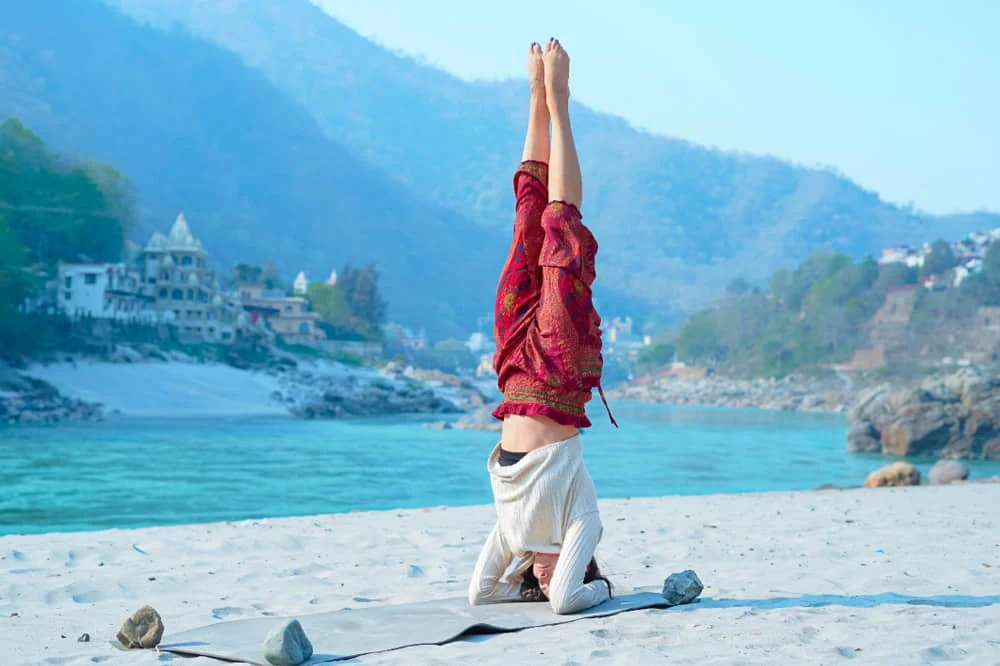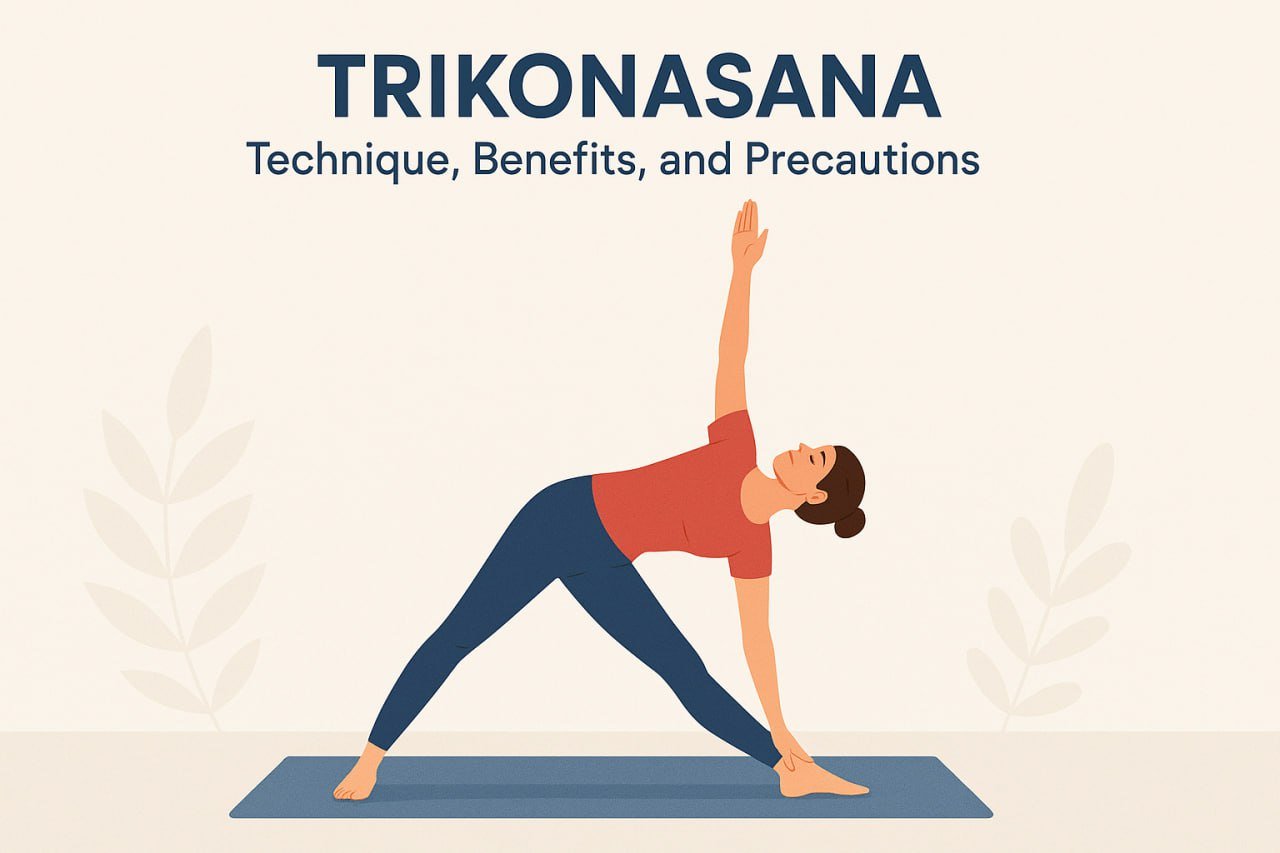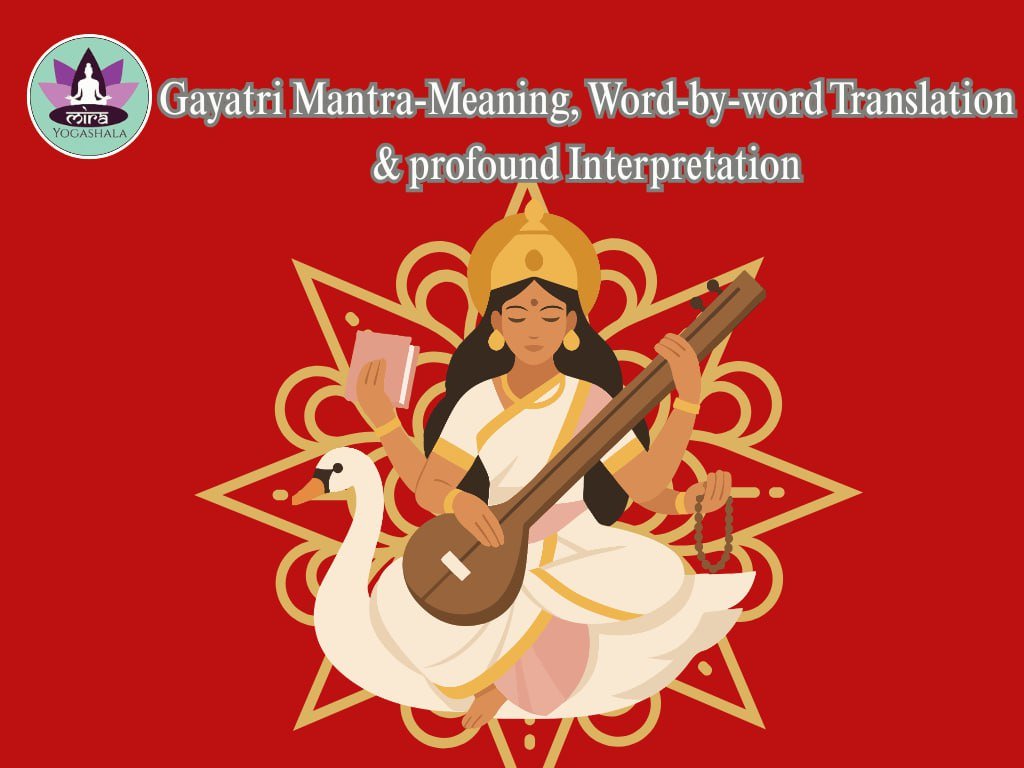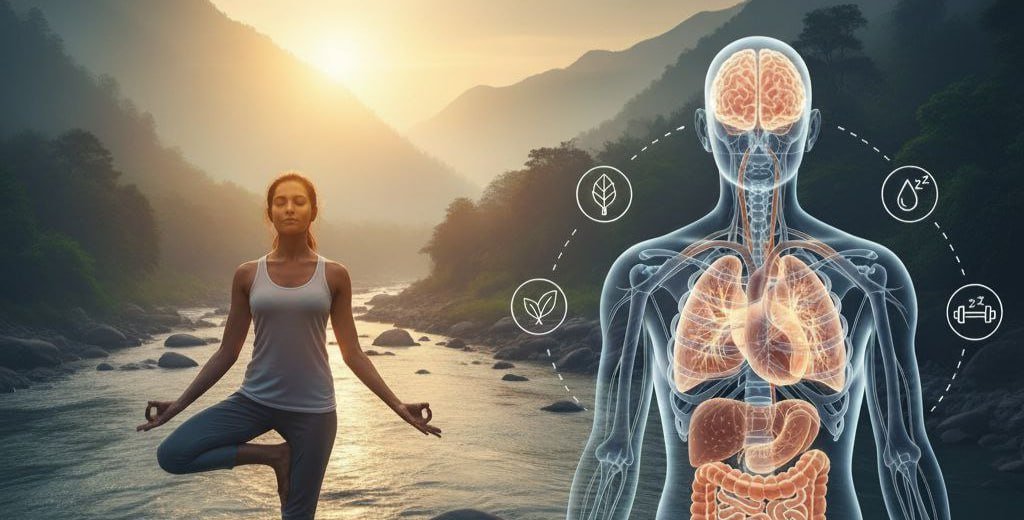Introduction of Vrikshasana
Vrikshasana, usually known as the Tree Pose, gets its name because the final posture looks like a tree standing tall. The term Vrikshasana is from the Sanskrit language, where ‘vriksha’ means tree and ‘asana’ means pose. This pose is mentioned in historic mythology, including the Ramayana. As per the legend, Lord Ravana performed Vrikshasana to appease Lord Shiva for a favorable boon.
Vrikshasana is a balancing pose. It aids in improving your physical and mental balance. And like a firmly-rooted tree, this pose grounds you and keeps you centered in the present. Practicing this asana regularly makes your body feel more centered, calms your mind, and brings a sense of peace and stability.
Importance of Vrikshasana
- Vrikshasana is not just a physical posture; it carries a deep spiritual and symbolic meaning.
- Symbol of stability: Just as a ‘vriksha’ (tree) stays rooted in the earth, vrikshasana improves mental and emotional stability.
- Balance and Mindfulness: Doing this pose, we need to concentrate and teach you to stay present in the moment.
- Foundation for Advanced Poses: Learning Vrikshasana properly improves coordination, which helps you in attempting more challenging and balancing postures in the future.
How to Do Vrikshasana (Tree Pose)

- Stand straight with both arms relaxed by your sides. Keep your body alert and stable.
- Fix your gaze on a point ahead to help maintain balance.
- Exhale and raise your right leg.
- Rest the sole of your right foot on the inner thigh of your left leg.
- Keep your heel close to your inner thighs (avoid pressing on your knee joint).
- Inhale (breathe in) and raise both your hands above your head slowly.
- Unite the palms in Namaskar Mudra.
5. Hold the Pose
- Remain in this position for 3-10 deep breaths; it will work wonders for your body and leave it tranquil.
6. Come Back Down
- Breathe out, take your arms down, and drop your right leg.
- Return to the starting position.
7. Repeat on the Other Side
- Repeat the entire sequence with your left leg lifted and right foot grounded.
Breathing Pattern in Tree Pose
- Inhale as you float your arms and balance.
- Exhale; it’s hard to ground your posture.
- Maintain slow and calm breaths during this pose.
Benefits of Vrikshasana/Tree pose
- Build Strength: Will develop strong legs, gorgeous arms, and lean back and pelvic muscles with open hips.
- Improved Coordination: Gets your muscles and brain to cooperate better.
- Increases Balance: enhanced stability, endurance, and total body control.
- Enhances Clarity of Thought: Increases learning, focus, and concentration.
- Relieves pain: It can be helpful for people with leg nerve pain.
- Brings inner balance: Supports physical and emotional stability.
Levels of Vrikshasan0a (Tree pose)
You can adjust vrikshasana based on your practice level:
- Beginner: Place your foot on your calf instead of the thigh for better balance.
- Advanced: Try to close your eyes while doing this pose to test your stability.
- Pro: Instead of overhead Namaste, stretch your arms out to the sides or interlace your fingers above your head.
Common Mistakes to Avoid
- Placing Foot on Knee: Never place your foot directly on the knee; it can hurt the joint.
- Leaning the Body: keep your back straight and avoid leaning to one side.
- Holding the Breath: Keep your breath slow and stable for better focus and balance.
- Rushing the Pose: Move in and out of the pose slowly to stay stable and avoid losing balance.
Precautions
- For people who have high blood pressure, we suggest they avoid raising their arms overhead.
- Individuals with knee injuries should be careful, especially in placing the foot against the opposite leg.
- Use a wall or chair for your support if you have balance issues.
Note– Pregnant women should practice this pose near a wall for safety.
Tips for Beginners
- Practice near a wall for support until you feel stable.
- Keep your gaze fixed on a point that doesn’t move.
- Start with a few seconds and gradually increase the duration.
Best Time to Practice
There is no specific time to do yoga, but for the best result, try Vrikshasana:
- in the morning, on an empty stomach.
- Or at least 3-4 hours after a meal.
- Morning practice helps you feel energized and focused all day.
Practice Vrikshasana at Mira Yogashala in Rishikesh
At Mira Yogashala, one of the best yoga schools in Rishikesh, students are guided to practice Vrikshasana (Tree Pose) with proper alignment, steady breathing, and mindful awareness. In the serene atmosphere of Rishikesh, this pose becomes more than a physical posture; it is a journey into balance, grounding, and inner calm. Whether you are a beginner or an advanced practitioner, Mira Yogashala offers the perfect space to deepen your understanding and experience the true essence of yoga.
Join Mira Yogashala for the Best Yoga Teacher Training Course In Rishikesh
- 100 hour yoga teacher training course in Rishikesh
- 200 hour yoga TTC in Rishikesh
- 300 hour yoga certification course in Rishikesh
- 500 hour yoga teacher training in Rishikesh
FAQ:
Q- What is Vrikshasana, and what are its benefits?
A: Vrikshasana, or Tree Pose, is a common standing yoga asana that improves balance, builds stronger legs, and boosts concentration. It also removes stress, promotes flexibility in the body, and helps to maintain a good posture.
Q- Can beginners do Vrikshasana?
A: Yes. Beginners could put the raised foot on the calf or ankle instead of the thigh. Doing them against a wall for support also encourages balance and stability.
Q- When is the ideal time to do Vrikshasana?
A: The early morning on an empty stomach is best. If mornings also do not work for you, at least give a margin of 3–4 hours post-food..
Q-Can pregnant women practice Vrikshasana?
A: Yes, with professional instruction only. Pregnant women have to practice near a wall for support and not strain. It would be advisable to consult a doctor or a certified yoga teacher.
A: Indirectly, yes. Vrikshasana doesn’t burn a lot of calories, but the posture strengthens your legs and helps to straighten your spine while increasing body awareness, all of which will benefit anyone working toward a weight loss goal.

